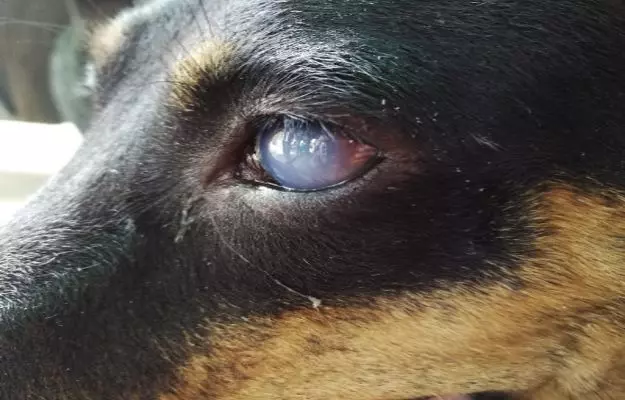Like humans, dogs can develop cataracts as well. The lens of the eyes, which focus light onto the retina in a process called accomodation, is transparent in healthy dogs. In some dogs, parts of the lens become opaque and cloudy, usually with age, and if this coverage is sufficient, there can be vision problems and other eye complications.
Why does the lens become cloudy? In some dogs, and some breeds in particular, cataracts are congenital. The genes play a role in other cases and these cataracts affect younger dogs usually under the age of five. Diabetes also causes cataracts as the excess blood glucose alters the composition of the aqueous solution surrounding the lens. Less frequently, trauma such as accidents and electric shocks can also cause cataracts.
Cataracts vary in severity. Incipient cataracts cover less than 15% of the lens and are not visible to the owner or noticed by the dog. Mature cataracts cover a greater part of the lens and penetrate deeper into its layers. Vision impairment may occur and the retina may not be visible under observation.
While cataracts by themselves are not usually painful, they can cause glaucoma and uveitis which can cause a great deal of pain. Glaucoma is caused by increased pressure within the eye and can lead to blindness, while uveitis is an inflammation of the middle layer of the eye.
In the case of incipient or immature cataracts, eye drops can help by dilating the eye and allowing more light to hit the retina. However, in more severe cataracts, surgery is required. In a process called phacoemulsification, sound waves are used to dissolve the cataract and a vacuum pump sucks out the damaged tissue. An artificial lens is then inserted in its place. Surgery does have its complications and the dog is put on eye drops indefinitely. Post surgery bleeds are dangerous and can cause blindness - they can be triggered by excessive barking or physical activity. Inflammation in the eye can also occur, which is painful and can lead to glaucoma and uveitis.
The choice to go for surgery involves a cost benefit analysis. If the dog is relatively young and pre-operational inflammation is minimal, then surgery is more likely to be effective. Further, an electroretinogram, which determines functioning of the retina, should also be conducted first to check if the retina is still functioning. If it is not, then it doesn't necessitate putting the dog through the trauma of surgery.
Since diabetes can lead to cataracts, a healthy diet and regular exercise is vital for your dog. If the cause is congenital, there is unfortunately not much that can be done in terms of prevention. It is helpful to remember that dogs rely more on their sense of smell and hearing than on seeing to interact with the world. A blind or near blind dog can have a high quality of life with some support from its owner.































